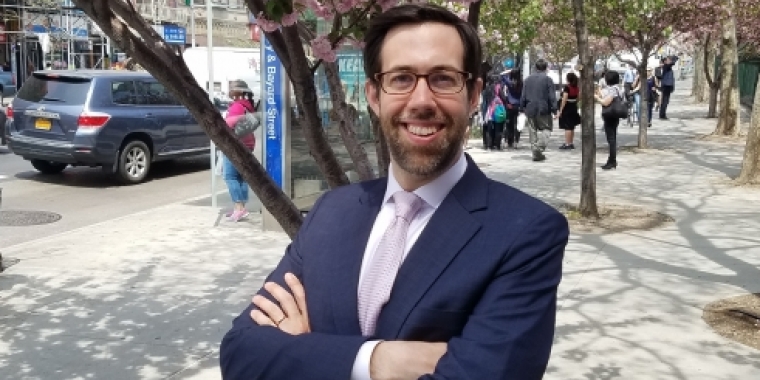Small stores key to ’hoods’ health, some tell hearing
Feature article in The Villager
By Albert Amateau
Small, family-owned stores are facing a host of threats in Manhattan, including high rents, national chains overwhelming neighborhoods, oppressive enforcement of city regulations and, of course, the economic downturn.
But business and community representatives who spoke at a Sept. 18 hearing on “retail diversity and neighborhood health” conducted by state Senator Daniel Squadron were at odds over the causes and remedies of the near death of the neighborhood mom-and-pop store.
Susan Stetzer, district manager of Community Board 3, said there was a correlation between the ever-growing number of bars and restaurants in the East Village and the loss of diversity of small retail businesses in the neighborhood.
“Many streets seem vacant during the day and open only at 5 p.m., serving only one demographic, young people with disposable income,” Stetzer said. She added that successful businesses have been closing when their leases expire because they cannot afford new doubled or tripled rent.
“As a retailer, I feel like I’m being nickel-and-dimed to death by a seemingly endless array of government and agency fees and fines,” said David Zarin, president of Zarin Fabrics at Grand and Orchard Sts.
Zarin called for shifting tax incentives for large corporations to small businesses.
“If the same amount of incentive money is split among small businesses throughout the city, not only will this create greater employment but it will also support more commerce in a larger number of neighborhoods,” Zarin contended.
Ro Sheffe, head of the Financial District Committee of Community Board 1, said the combination of 60 major construction projects being underway simultaneously with the closing or partial closing of streets south of Canal St. is drastically reducing pedestrian traffic and retail revenue.
Sheffe said the Lower Manhattan Development Corporation’s federal Small Business Assistance Program helps some retailers, “but it is often inadequate and never reaches hundreds of others.” The program, funded in 2007 with $5 million, needs to be refunded and extended beyond its 2010 sunset year, the C.B. 1 member said.
Sheffe added that under current eligibility rules, only half of the retail stores in Board 1 qualify for the L.M.D.C. relief. Instead of delays of eight to 10 weeks, payments should be made within two weeks of approval, Sheffe said. He also said he recently went door to door and found none of the 22 merchants interviewed had heard of the program.
Liz Berger, director of the Downtown Alliance business improvement district, insisted that the issue was “not big versus small, national versus local.”
Berger, head of the fourth-largest BID in the city, said the alliance has been focusing on retaining a variety of retail business in the district, which attracts an estimated 6 million tourists annually.
Dan Biederman, director of the 34th St. Partnership, a large Midtown BID, agreed with Berger that big-box stores and local retailers could coexist.
“Not all national chains are bad and not all small retailers are great,” Biederman said. But Berger and Biederman both said that any increase in sales tax would discourage retail shoppers.
“Given our location, it’s so easy to shop in New Jersey or Connecticut or online,” Berger said.
However, Ted Potrikus, executive vice president of the Retail Council of New York, said the council would favor so-called formula restrictive zoning limiting national chains in some neighborhoods.
Elena Conte, planning and research director of the Pratt Center for Community Development, submitted testimony saying national chain retailers are continuing to expand in major Manhattan shopping districts, and that even as some chains close down, others are arriving for the first time.
“Property owners tend to seek chains, not only because they are willing and able to pay higher rents than independents can, but because of fears that independent retailers are a risky bet in today’s challenging economy,” the Pratt Center statement said.
“If we didn’t own our own building, I don’t think we could have survived,” Tony Bates, owner of Bentley’s Shoes in Brooklyn Heights, told the panel.
Squadron — whose state Senate district includes Soho, the Lower East Side, the East Village, Chinatown, Tribeca, Lower Manhattan and from Greenpoint to Gowanus along Brooklyn’s western edge — said later that the goal of the two-and-a-half-hour hearing was to devise legislation to create a fair playing field to encourage retail diversity.
“There were a lot of good ideas and we need to look at what could go into a legislative solution,” he said. “I hope we can do a careful and complete job and do it right.”



